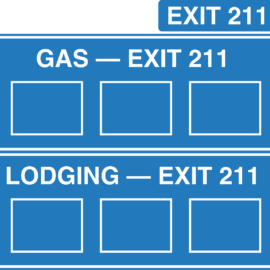
I like lighthouses from the time I was on a buoy tender and we fueled them on the Maine and New Hampshire coasts. The “lighthouse” project does the same, it; “beacon” calls people to safety.
An ambitious new project to create a network of church “lighthouses” powered by solar panels and batteries for community use after hurricanes throughout the New Orleans area and beyond has been given a jolt of funding – but more money is still needed. At a packed church in New Orleans East on Tuesday, local leaders and community activists from the Together New Orleans advocacy group symbolically approved the project that officials said aims to create the world’s largest network of resilience hubs – a model that could be replicated in other locations. The pilot phase of the project envisions equipping 24 locations, mostly churches, including 16 in the city and eight around Louisiana. “The Dutch might come here to see how we do it,” said Rev. Shawn Anglim of First Grace United Methodist Church — just as New Orleanians visited the Netherlands after Hurricane Katrina to learn how to build world-class levees.
nola.com
$10 million has been raised but more is needed if the project is to be fully funded and installed.
Total funding pledged so far amounts to around $10 million, including Mayor LaToya Cantrell’s $1 million commitment from the city’s Wisner Fund and U.S. Rep. Troy Carter’s announcement Tuesday of a federal earmark of $3.8 million. The Greater New Orleans Foundation is also donating $1 million. That’s enough to finance about 15 locations, said Pierre Moses of 127 Energy, the project developer. A total of $13.8 million is being sought. Tuesday’s event at Household of Faith Family Worship church saw rousing speeches and testimony from residents underscoring the need for such centers. One spoke of carbon monoxide poisonings; another man described a medical condition that causes his body to overheat. Together New Orleans said of the 20 deaths in the New Orleans area during and after last summer’s Hurricane Ida, 18 were the result of power outages. Cantrell said “renewable energy has to be not only in our future, but right now.” “The future of this city not only is bright, but, hey, it is lit,” she said to cheers and applause.
The churches will receive both solar panels and batteries. They will be able to offer refuge to those in need.
Together New Orleans’ leaders envision the locations serving as charitable aid stations when utility-provided power fails. The scope of the pilot “community lighthouse” project has more than doubled since it was unveiled last month, when its architects envisioned using $4.6 million to outfit 10 churches with solar panels and backup batteries. The hope is that people near the houses of worship would have a nearby source of working power where they might be able to seek aid, get something to eat, and perhaps most importantly, recharge life-saving medical devices. Some 2,283 New Orleanians rely on electrically powered medical devices to survive, the group said. The group is hoping to secure additional funding through the $1.2 trillion infrastructure bill passed by Congress last year. The project was one of 14 selected by the U.S. Department of Energy to receive technical assistance, according to Together New Orleans’ lead organizer Brod Bagert, which the group views as a hopeful sign.
The goal is for enough churches that people will be no more than a 15 minute walks from one.
If the project is built as designed, the group says almost all city residents would be within a 15-minute walk of one of the churches. For churches, a key ancillary benefit of the project would be that they will save a significant amount of money on their utility bills year-round, not just after power outages. Leaders of the group say the project had its genesis in the suffering so many residents endured after Ida. In addition to 16 locations across New Orleans, the group envisions putting solar arrays at eight other locations around the state, in Caddo, Rapides, East Baton Rouge, St. John the Baptist, Jefferson, Terrebonne, Calcasieu and St. Bernard or Plaquemines parishes. Only three of those locations have been selected to date: McKinley Alumni Center in Baton Rouge, New Wine Fellowship in LaPlace, and Mt. Olive Baptist Church in Lake Charles.
This is a good idea and Broadmoor Church is one of the beneficiaries.

